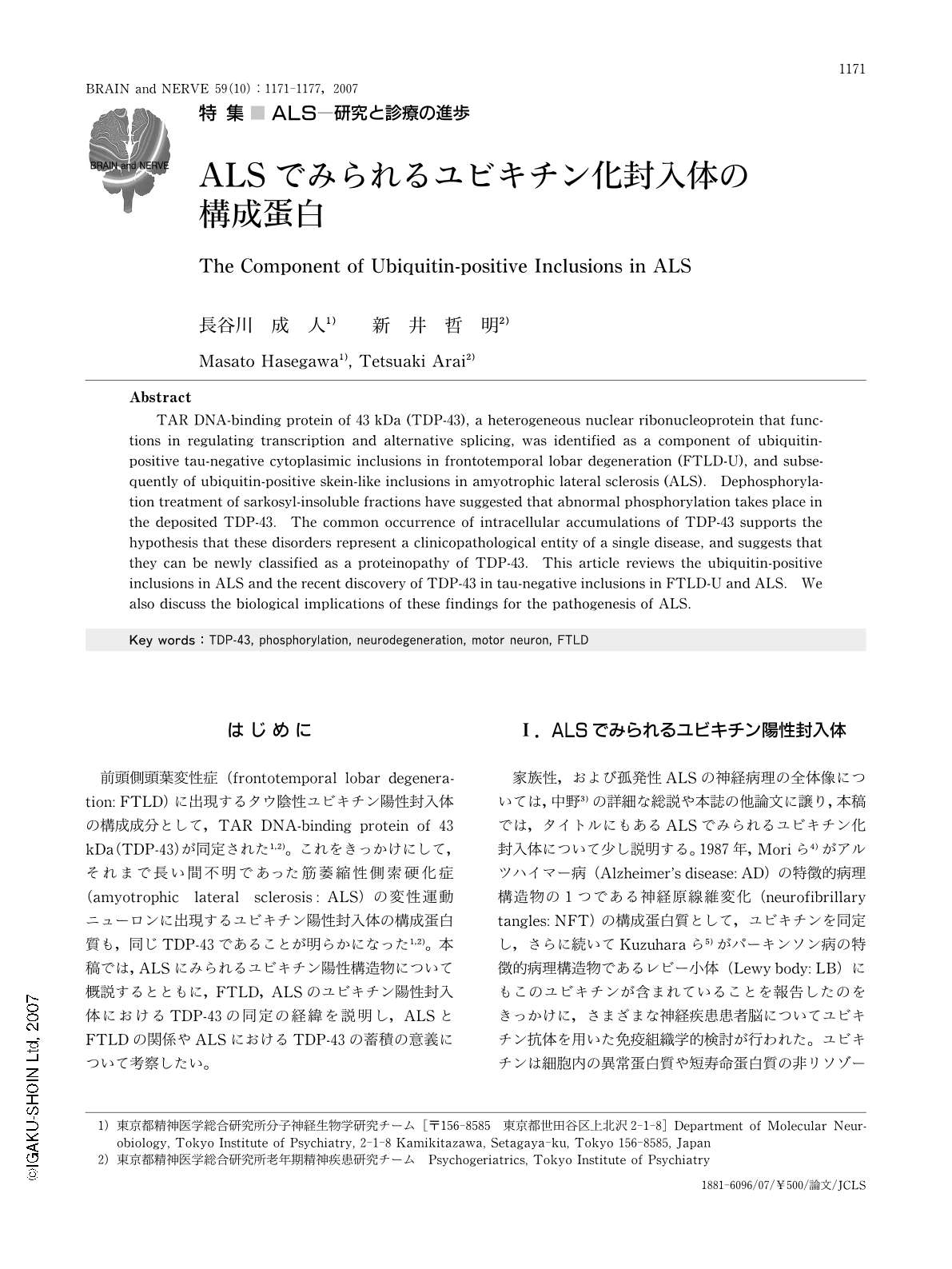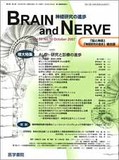Japanese
English
- 有料閲覧
- Abstract 文献概要
- 1ページ目 Look Inside
- 参考文献 Reference
はじめに
前頭側頭葉変性症(frontotemporal lobar degeneration: FTLD)に出現するタウ陰性ユビキチン陽性封入体の構成成分として,TAR DNA-binding protein of 43 kDa(TDP-43)が同定された1,2)。これをきっかけにして,それまで長い間不明であった筋萎縮性側索硬化症(amyotrophic lateral sclerosis: ALS)の変性運動ニューロンに出現するユビキチン陽性封入体の構成蛋白質も,同じTDP-43であることが明らかになった1,2)。本稿では,ALSにみられるユビキチン陽性構造物について概説するとともに,FTLD,ALSのユビキチン陽性封入体におけるTDP-43の同定の経緯を説明し,ALSとFTLDの関係やALSにおけるTDP-43の蓄積の意義について考察したい。
Abstract
TAR DNA-binding protein of 43 kDa (TDP-43), a heterogeneous nuclear ribonucleoprotein that functions in regulating transcription and alternative splicing, was identified as a component of ubiquitin-positive tau-negative cytoplasimic inclusions in frontotemporal lobar degeneration (FTLD-U), and subsequently of ubiquitin-positive skein-like inclusions in amyotrophic lateral sclerosis (ALS). Dephosphorylation treatment of sarkosyl-insoluble fractions have suggested that abnormal phosphorylation takes place in the deposited TDP-43. The common occurrence of intracellular accumulations of TDP-43 supports the hypothesis that these disorders represent a clinicopathological entity of a single disease, and suggests that they can be newly classified as a proteinopathy of TDP-43. This article reviews the ubiquitin-positive inclusions in ALS and the recent discovery of TDP-43 in tau-negative inclusions in FTLD-U and ALS. We also discuss the biological implications of these findings for the pathogenesis of ALS.

Copyright © 2007, Igaku-Shoin Ltd. All rights reserved.


